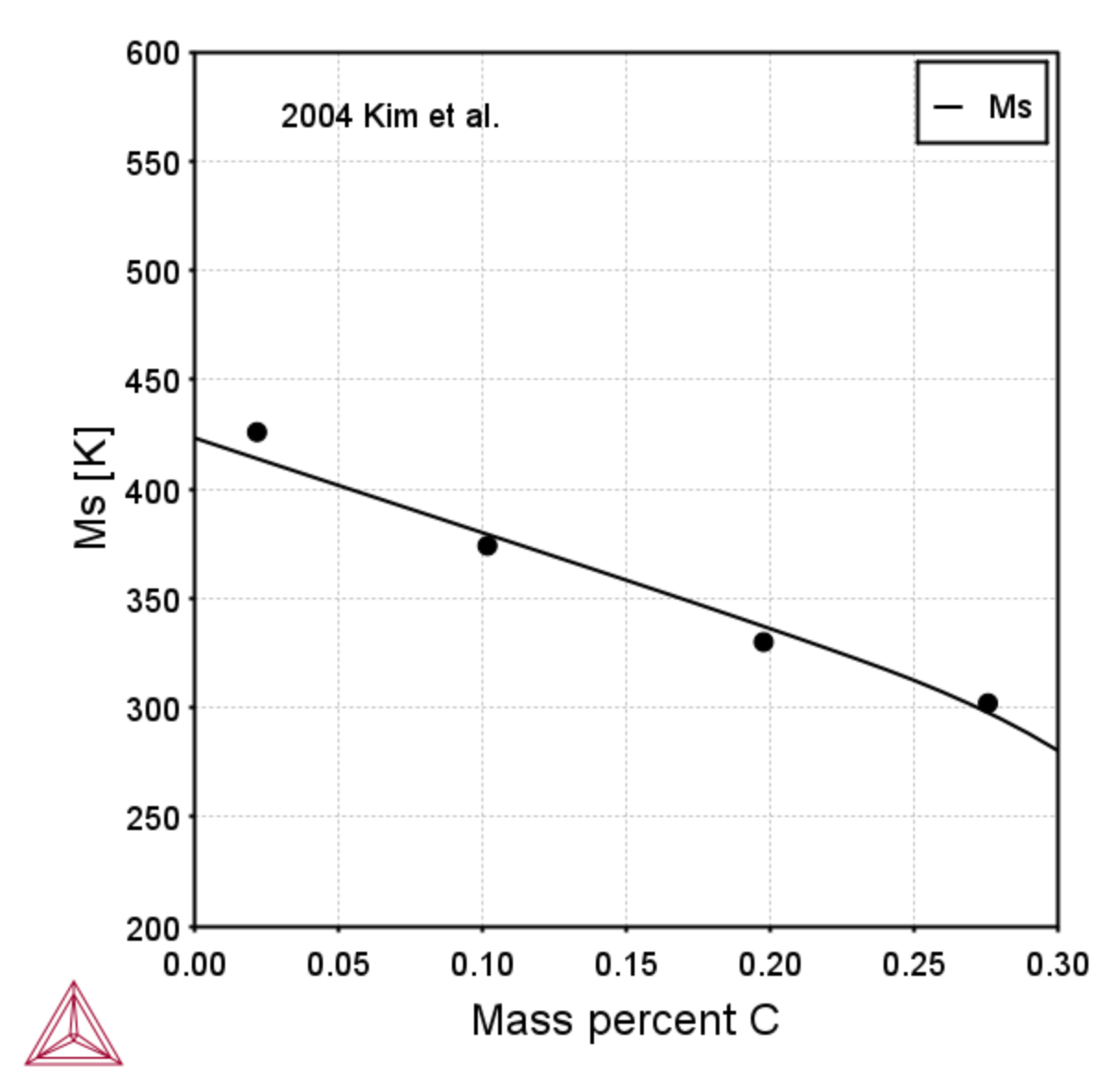Martensite Formation
The TCS Steel and Fe-alloys Database (TCFE) has been successfully used for thermodynamically-based predictions of the lath and plate martensite start (Ms) temperature [2012Sto]. The Ms temperature prediction depends on the available driving force which should be equal to the barrier for martensite formation.
Starting with the TCFE9 version of this database, particular attention is paid to the epsilon (ε) martensite transformation, and the thermodynamic descriptions of Fe-Mn-C system is modified to give a reasonable driving force for the γ→ε diffusionless transformation. As a result, the database can be used to predict the Ms temperature using the Property Model Calculator.
Read more on our website about Property Models, including information about the material specific Model Libraries (i.e steel, nickel, titanium, etc.), as well as how to create your own custom models in TC‑Python. If you are in Thermo‑Calc, press F1 to search the help.
Fe-Mn
Fe-Mn-C Alloys
Figure 2: Calculated Epsilon martensite start temperature for Fe-17at.% Mn-xC alloys compared with the experimental data by [2004Kim].
References
[2004Kim] J.-C. Kim, D.-W. Han, S.-H. Baik, and Y.-K. Lee, Effects of alloying elements on martensitic transformation behavior and damping capacity in Fe–17Mn alloy, Mater. Sci. Eng. A, vol. 378, no. 1–2, pp. 323–327 (2004).
[2012Sto] A. Stormvinter, A. Borgenstam, J. Ågren, Thermodynamically Based Prediction of the Martensite Start Temperature for Commercial Steels, Metall. Mater. Trans. A. 43, 3870–3879 (2012).

